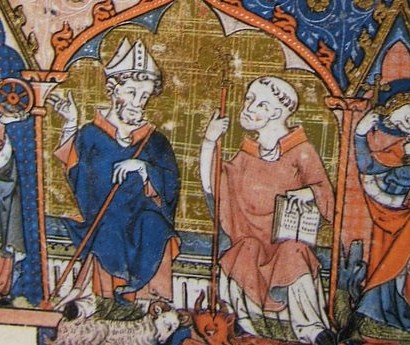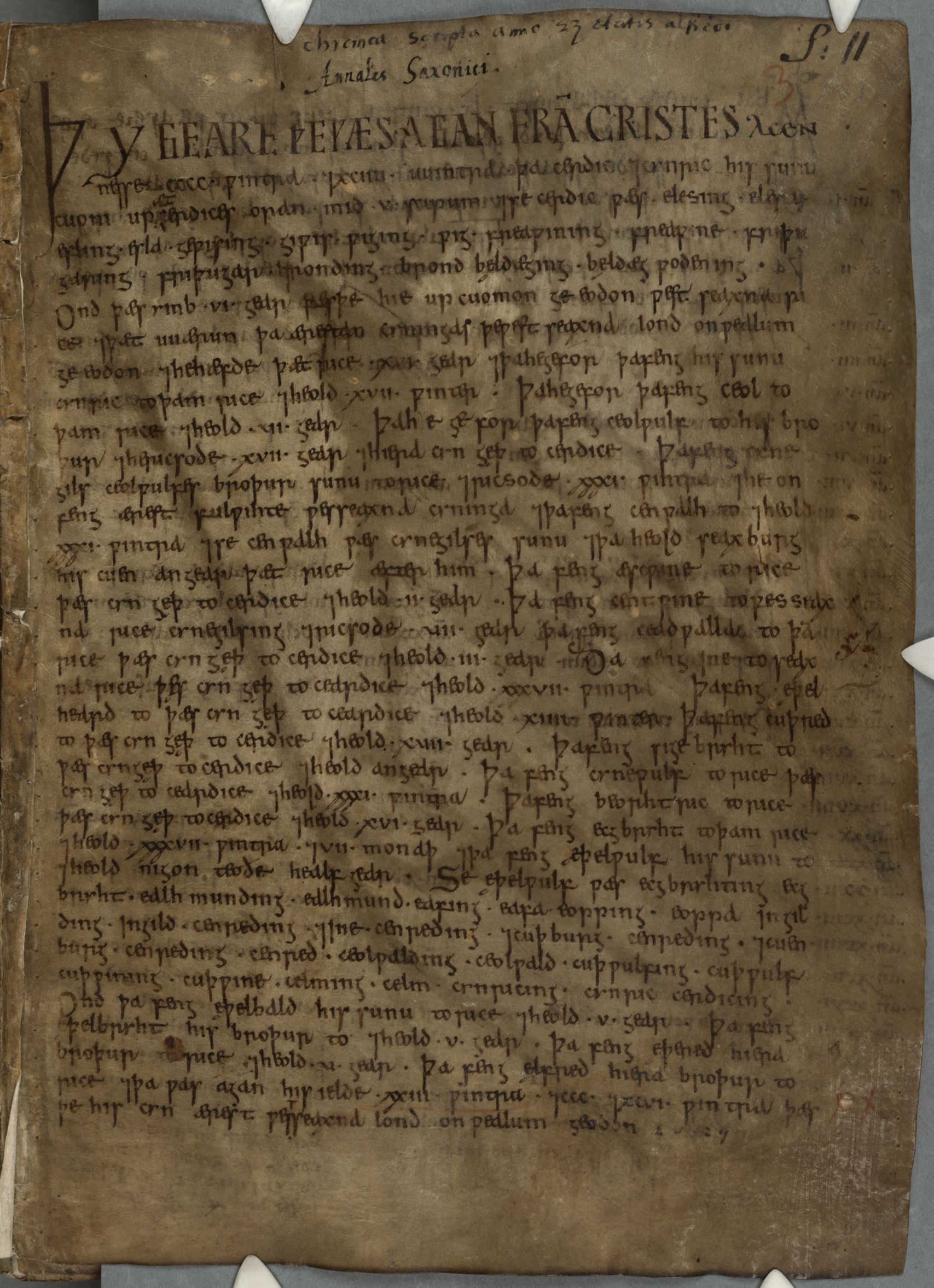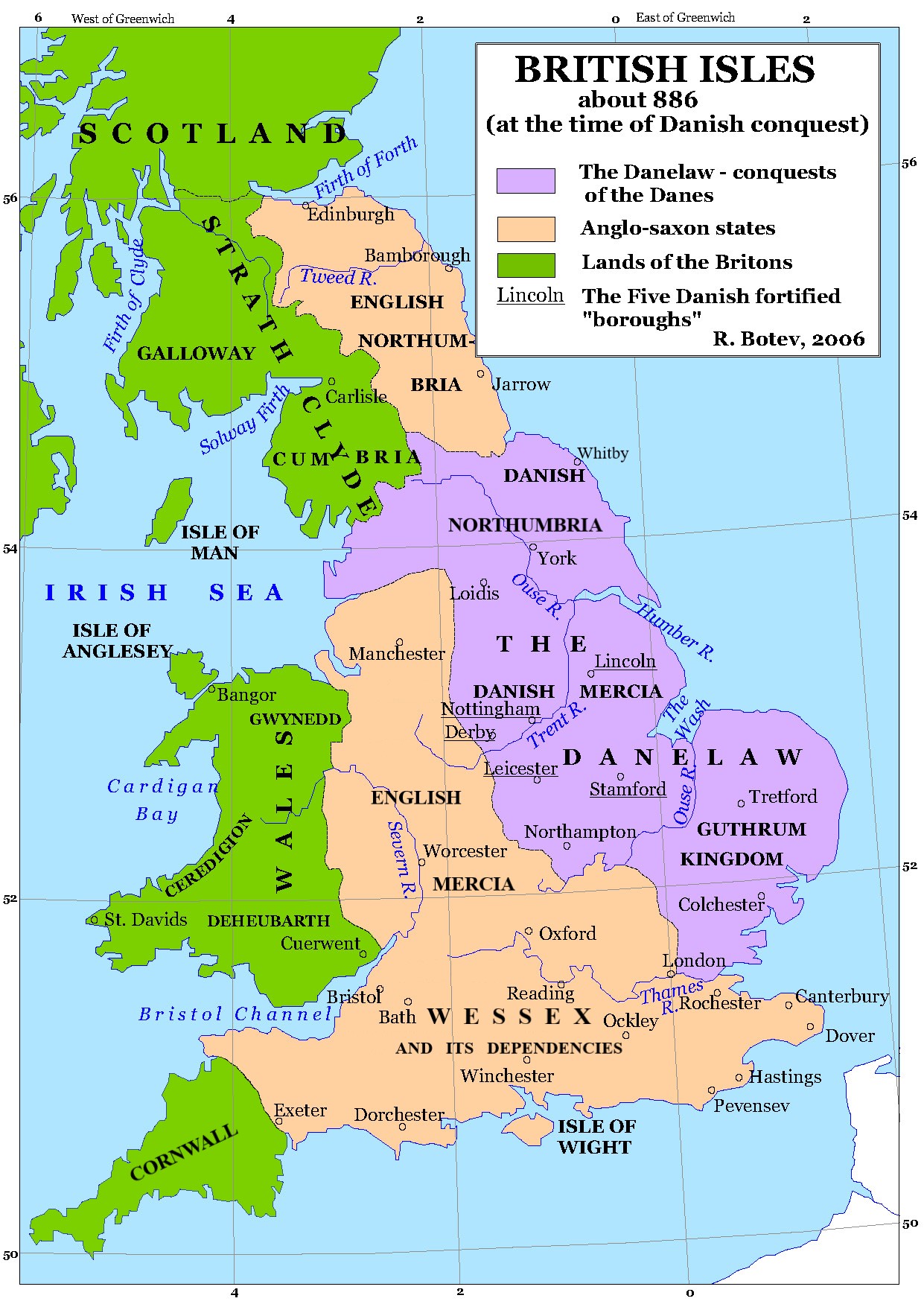|
Instituta Cnuti
The ''Instituta Cnuti'', in full ''Instituta Cnuti aliorumque regum Anglorum'' (''Institutes of Cnut and other kings of the English''), is a legal compilation that cites, in Latin translation, selected material of Old English law. It was put together by an Anglo-Norman cleric, possibly at Worcester, sometime after the Conquest, between 1066 and 1124. Contents The work consists of three sections. The first two contain passages from Cnut's two law codes (''I Cnut'' and ''II Cnut''), occasionally with amendments by the compiler to suit contemporary circumstances. The last section has material excerpted from the laws of Ine, Alfred, and Edgar (''II Edgar''), as well as unofficial legal tracts associated with Wulfstan, Archbishop of York, like '' Geþyncðu''. The selection shows that the translator took particular interest in (secular) Danelaw. The ''Instituta'' may be compared to the '' Consiliatio Cnuti'', which offers a near-complete Latin translation of Cnut's legislation. M ... [...More Info...] [...Related Items...] OR: [Wikipedia] [Google] [Baidu] |
Worcester, England
Worcester ( ) is a cathedral city in Worcestershire, England, of which it is the county town. It is south-west of Birmingham, north-west of London, north of Gloucester and north-east of Hereford. The population was 103,872 in the 2021 Census. The River Severn flanks the western side of the city centre. It is overlooked by Worcester Cathedral. Worcester is the home of Royal Worcester Porcelain, composer Edward Elgar, Lea & Perrins, makers of traditional Worcestershire sauce, the University of Worcester, and ''Berrow's Worcester Journal'', claimed as the world's oldest newspaper. The Battle of Worcester in 1651 was the final battle of the English Civil War, during which Oliver Cromwell's New Model Army defeated King Charles II's Royalists. History Early history The trade route past Worcester, later part of the Roman Ryknild Street, dates from Neolithic times. It commanded a ford crossing over the River Severn, which was tidal below Worcester, and fortified by the Britons ... [...More Info...] [...Related Items...] OR: [Wikipedia] [Google] [Baidu] |
Norman Conquest Of England
The Norman Conquest (or the Conquest) was the 11th-century invasion and occupation of England by an army made up of thousands of Norman, Breton, Flemish, and French troops, all led by the Duke of Normandy, later styled William the Conqueror. William's claim to the English throne derived from his familial relationship with the childless Anglo-Saxon king Edward the Confessor, who may have encouraged William's hopes for the throne. Edward died in January 1066 and was succeeded by his brother-in-law Harold Godwinson. The Norwegian king Harald Hardrada invaded northern England in September 1066 and was victorious at the Battle of Fulford on 20 September, but Godwinson's army defeated and killed Hardrada at the Battle of Stamford Bridge on 25 September. Three days later on 28 September, William's invasion force of thousands of men and hundreds of ships landed at Pevensey in Sussex in southern England. Harold marched south to oppose him, leaving a significant portion of h ... [...More Info...] [...Related Items...] OR: [Wikipedia] [Google] [Baidu] |
Cnut The Great
Cnut (; ang, Cnut cyning; non, Knútr inn ríki ; or , no, Knut den mektige, sv, Knut den Store. died 12 November 1035), also known as Cnut the Great and Canute, was King of England from 1016, King of Denmark from 1018, and King of Norway from 1028 until his death in 1035. The three kingdoms united under Cnut's rule are referred to together as the North Sea Empire. As a Danish prince, Cnut won the throne of England in 1016 in the wake of centuries of Viking activity in northwestern Europe. His later accession to the Danish throne in 1018 brought the crowns of England and Denmark together. Cnut sought to keep this power-base by uniting Danes and English under cultural bonds of wealth and custom. After a decade of conflict with opponents in Scandinavia, Cnut claimed the crown of Norway in Trondheim in 1028. The Swedish city Sigtuna was held by Cnut (he had coins struck there that called him king, but there is no narrative record of his occupation). In 1031, Malcolm II of ... [...More Info...] [...Related Items...] OR: [Wikipedia] [Google] [Baidu] |
Law Codes Of Cnut
King Cnut Cnut (; ang, Cnut cyning; non, Knútr inn ríki ; or , no, Knut den mektige, sv, Knut den Store. died 12 November 1035), also known as Cnut the Great and Canute, was King of England from 1016, King of Denmark from 1018, and King of Norway ... of England issued two complementary law-codes during his reign, though they are believed to have been edited or even composed by Wulfstan, Archbishop of York. They were composed in Old English and are divided into two parts, I Cnut (on ecclesiastical matters) and II Cnut (on secular matters). As well as surviving in the later Latin translation of the '' Instituta Cnuti'', the laws of Cnut survive in four manuscripts: * London, British Library, Cotton Nero A. i, fols. 3–41 (mid-eleventh century) * Cambridge, Corpus Christi College 201, fols. 126–30 (mid-eleventh century) * Cambridge, Corpus Christi College 383, pp. 43–72 (twelfth-century) * London, British Library Harley 55, fols. 5–13 (twelfth-century).Mary P ... [...More Info...] [...Related Items...] OR: [Wikipedia] [Google] [Baidu] |
Ine Of Wessex
Ine, also rendered Ini or Ina, ( la, Inus; c. AD 670 – after 726) was King of Wessex from 689 to 726. At Ine's accession, his kingdom dominated much of southern England. However, he was unable to retain the territorial gains of his predecessor, Cædwalla, who had expanded West Saxon territory substantially. By the end of Ine's reign, the kingdoms of Kent, Sussex, and Essex were no longer under West Saxon sway; however, Ine maintained control of what is now Hampshire, and consolidated and extended Wessex's territory in the western peninsula. Ine is noted for his code of laws (''Ines asetnessa'' or "laws of Ine"), which he issued in about 694. These laws were the first issued by an Anglo-Saxon king outside Kent. They shed much light on the history of Anglo-Saxon society, and reveal Ine's Christian convictions. Trade increased significantly during Ine's reign, with the town of Hamwic (now Southampton) becoming prominent. It was probably during Ine's reign that the West Saxons ... [...More Info...] [...Related Items...] OR: [Wikipedia] [Google] [Baidu] |
Alfred The Great
Alfred the Great (alt. Ælfred 848/849 – 26 October 899) was King of the West Saxons from 871 to 886, and King of the Anglo-Saxons from 886 until his death in 899. He was the youngest son of King Æthelwulf and his first wife Osburh, who both died when Alfred was young. Three of Alfred's brothers, Æthelbald, Æthelberht and Æthelred, reigned in turn before him. Under Alfred's rule, considerable administrative and military reforms were introduced, prompting lasting change in England. After ascending the throne, Alfred spent several years fighting Viking invasions. He won a decisive victory in the Battle of Edington in 878 and made an agreement with the Vikings, dividing England between Anglo-Saxon territory and the Viking-ruled Danelaw, composed of northern England, the north-east Midlands and East Anglia. Alfred also oversaw the conversion of Viking leader Guthrum to Christianity. He defended his kingdom against the Viking attempt at conquest, becoming the dominan ... [...More Info...] [...Related Items...] OR: [Wikipedia] [Google] [Baidu] |
Edgar The Peaceable
Edgar ( ang, Ēadgār ; 8 July 975), known as the Peaceful or the Peaceable, was King of the English from 959 until his death in 975. The younger son of King Edmund I and Ælfgifu of Shaftesbury, he came to the throne as a teenager following the death of his older brother, King Eadwig. As king, Edgar further consolidated the political unity achieved by his predecessors, with his reign being noted for its relative stability. His most trusted advisor was Dunstan, whom he recalled from exile and made Archbishop of Canterbury. The pinnacle of Edgar's reign was his coronation at Bath in 973, which was organised by Dunstan and forms the basis for the current coronation ceremony. After his death he was succeeded by his son Edward, although the succession was disputed. Early years and accession Edgar was the son of Edmund I and Ælfgifu of Shaftesbury. Upon the death of King Edmund in 946, Edgar's uncle, Eadred, ruled until 955. Eadred was succeeded by his nephew, Eadwig, Edmund's ... [...More Info...] [...Related Items...] OR: [Wikipedia] [Google] [Baidu] |
Wulfstan II Of York
Wulfstan (sometimes Wulfstan II or Lupus;Wormald "Wulfstan" ''Oxford Dictionary of National Biography'' died 28 May 1023) was an English Bishop of London, Bishop of Worcester, and Archbishop of York. He is thought to have begun his ecclesiastical career as a Benedictine monk. He became the Bishop of London in 996. In 1002 he was elected simultaneously to the diocese of Worcester and the archdiocese of York, holding both in plurality until 1016, when he relinquished Worcester; he remained archbishop of York until his death. It was perhaps while he was at London that he first became well known as a writer of sermons, or homilies, on the topic of Antichrist. In 1014, as archbishop, he wrote his most famous work, a homily which he titled the ''Sermo Lupi ad Anglos'', or the ''Sermon of the Wolf to the English''. Besides sermons Wulfstan was also instrumental in drafting law codes for both kings Æthelred the Unready and Cnut the Great of England.Mack "Changing Thegns" ''Albion'' p ... [...More Info...] [...Related Items...] OR: [Wikipedia] [Google] [Baidu] |
Danelaw
The Danelaw (, also known as the Danelagh; ang, Dena lagu; da, Danelagen) was the part of England in which the laws of the Danes held sway and dominated those of the Anglo-Saxons. The Danelaw contrasts with the West Saxon law and the Mercian law. The term is first recorded in the early 11th century as ''Dena lage''. The areas that constituted the Danelaw lie in northern and eastern England, long occupied by Danes and other Norsemen. The Danelaw originated from the invasion of the Great Heathen Army into England in the 9th century, although the term was not used to describe a geographic area until the 11th century. With the increase in population and productivity in Scandinavia, Viking warriors, having sought treasure and glory in the nearby British Isles, "proceeded to plough and support themselves", in the words of the '' Anglo-Saxon Chronicle'' for the year 876. Danelaw can describe the set of legal terms and definitions created in the treaties between Alfred the Grea ... [...More Info...] [...Related Items...] OR: [Wikipedia] [Google] [Baidu] |
Textus Roffensis
__NOTOC__ The ''Textus Roffensis'' (Latin for "The Tome of Rochester"), fully titled the ''Textus de Ecclesia Roffensi per Ernulphum episcopum'' ("The Tome of the Church of Rochester up to Bishop Ernulf") and sometimes also known as the Annals of Rochester, is a mediaeval manuscript that consists of two separate works written between 1122 and 1124. It is catalogued as "Rochester Cathedral Library, MS A.3.5" and is currently on display in a new exhibition at Rochester Cathedral, Rochester, Kent. It is thought that the main text of both manuscripts was written by a single scribe, although the English glosses to the two Latin entries (items 23 and 24 in table below) were made by a second hand. The annotations might indicate that the manuscript was consulted in some post-Conquest trials. However, the glosses are very sparse and just clarify a few uncertain terms. For example, the entry on f. 67r merely explains that the is called in English, ''ofraceth ordel'' (insult ordeal = t ... [...More Info...] [...Related Items...] OR: [Wikipedia] [Google] [Baidu] |





